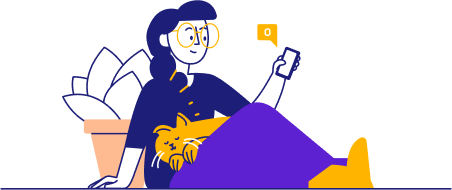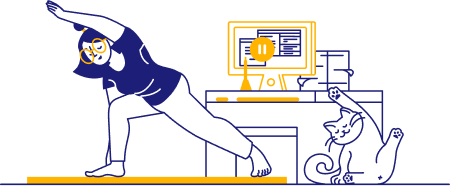This is a follow-up to our last post in July about making our first $10 in software revenue after two years.
The tl;dr of that post: we launched our first software product after 2 years, and in July, we generated our first $10 in revenue.
Here are our revenue totals for each month since we launched:
- July: $60
- August: $190
- September: $540
- October: $1,100
Our product helps people quickly create great resumes, and in the last four months, we’ve helped people create or update over 5,000 resumes!
This means we’ve gotten a lot of user feedback.
One of the biggest challenges these last four months has been prioritization. Our resources are very limited since the “team” is just my brother and me.
This is our first time experiencing any sort of traction, and we’ve made a ton of mistakes in the last four months.
The way I like to reflect is through the lens of my mistakes (that’s totally normal, well-adjusted behavior. Right?), so every few months, I’ll share company progress and talk about the biggest mistakes we made over that time frame.
If you want to get alerted whenever these reflections are posted, just leave your email below (these are the only emails you’ll get from us).
Lesson 1: SEO is a Slog for a While

Back in April, when we decided we were going to focus on this resume product, we knew (or really, hoped) that our primary acquisition channel would be content.
The thing is, neither my brother nor I have ever really written content before at a large scale. Neither of us knew anything about SEO.
So at that time, I read way too much about getting started with SEO. If you’re anything like me, when you start something new, you read way too much before actually doing anything.
If you’re doing that right now, reading this article, then stop reading this and get to work!
Through all my reading, I knew that it would take a while (three to six-plus months) between publishing content and getting search impressions through Google, especially in the beginning.
So for about three months, I was heads-down pumping out resume content with very little to show for it. You can see all the content I created on our resume examples page.
This was an absolute slog. I was writing a lot of long, detailed blog posts with nothing to show for it.
Still, since my expectation was that I’d have nothing to show for it right away, I didn’t have much trouble motivating. The only “metric” I cared about was whether I produced the amount of quality content that I set out to produce in a given week.
Then, in July, we started to see the fruits of my labor. We were starting to get about 50 clicks per day from Google.
That continued to grow over the last four months, and now we get about 500 clicks per day.
There’s a lag between writing content and getting traffic via SEO. But if you double down on this acquisition channel, and it pays off, the return can be exponential.
Lesson 2: QA Your Primary (Read: Only) Acquisition Channel

Just as we were starting to see some return from our efforts in SEO, we hit a snag.
Our search impressions and clicks jumped off a cliff in mid-July. We went from getting about 5,000 search impressions a day (and growing) to plummeting to under 1,000.
This made no sense. It was a precipitous drop that happened overnight.
I don’t know why no one tells you this, but when you make changes to your website in production, things can break. Who knew?!
What happened?
If you’re using a single-page application, then not all of the content you want a web crawler (like Google) to see will be available on page load. Since page speed is important in SEO, this can potentially impact your search rankings.
To solve this, you can use a pre-rendering service. These services preload all elements on the page in preparation for a web crawler to see it.
This was working for us without issue for a few months.
Then in July, we changed the structure of our blog posts to make them better for the user.
We pushed these changes to production, and in a few days, our search impressions plummeted.
What we didn’t realize was that when we made the change to our blog, we also messed with our pre-rendering. Now, instead of reading all of the content on a page, web crawlers were only able to see each page’s meta title and meta description.
Whoops.
I should have caught this. I could have checked in Google Search Console to see how web crawlers were seeing our pages, and I would have immediately identified this problem.
Instead, we went through a week of total panic as our performance tanked.
So, the lesson here is simple. Don’t be an idiot. If you make changes that may affect the ONLY channel through which you acquire customers, ensure those changes don’t break that channel.
Lesson 3: Don’t Give Weight to Random Internet Comments

The article I linked to on the top of this page did really well on HackerNews and generated over 10,000 visitors to our website.
I very quickly learned that I don’t have a thick skin when it comes to random internet comments.
The comments in the HackerNews thread weren’t even mean! There were a ton of supportive comments, even. We also got really thoughtful feedback from people who I had follow-up conversations with.
The critical comments were mostly centered around why it took us so long to build a seemingly basic resume builder, and we were likely wasting our time.
These people didn’t have the same view of the competitive landscape as I did, nor did they know our product vision, yet I really let these critical comments get to me.
Our traffic was growing through SEO, we finally had our first taste of success with a software product, and I was in the dumps.
Then, more customers started trickling in from SEO. I had conversations with customers about the pain points we were solving.
This helped us shake off how I was feeling, and again let me emphasize this, from random internet comments.
In hindsight (and even at the moment I knew), it was completely ridiculous to let these comments get to me. Still, some things are easier said than done.
Interestingly, my brother didn’t give two craps about the feedback. I hope next time I can adapt that mindset.
Lesson 4: A Smaller Range of Emotions Leads to More Productivity

For the first two years of our business, when we were pivoting from one thing to the next, I regularly felt a sense of existential dread.
I felt like I was wasting my time and my money, and I had absolutely nothing to show for it.
On the other side of the coin, the elation I felt from getting out first paying customer for our resume builder was a high I’ve never experienced.
In the last four months, my range of emotions has narrowed significantly.
If the scale of emotions goes from existential dread (1) to the first paying customer (10), I now rarely get outside of the 4-6 range.
This has drastically helped my productivity.
When you’re too low, it’s hard to motivate. When you’re too high, it’s easy to rest on your laurels.
The last four months have felt much more like a job than at any time in the last 2.5 years.
The big difference is that I decide what to work on, and of course, I own the upside of what I’m working on.
For me, it’s vitally important to my productivity that I maintain a tight range of emotions.
What’s Next?

Since our last update, we’ve launched some really cool new product features. Mainly, we’ve built an automated resume grader that gives you actionable feedback on your resume, and we’ve added the ability for your to upload your existing resume.
We’re going to continue to talk to customers and uncover other pain points we can help alleviate. I’ll also continue to write more and more resume content.
If you want to get an email every three to four months when I publish a new company update, just leave your email below.




